Lohja 作者: 来源: 发布时间:2021-10-12
一、所属省或是州,具体位置,人口,面积
Lohja is a city and municipality in the Uusimaa region of Finland. The city has a population of 47,518 (2017), and it covers an area of 1,109.73 square kilometres (428.47 sq mi) of which 91.78 km2 (35.44 sq mi), or 8.3 percent, is water. The population density of Lohja is 132.42 inhabitants per square kilometre (343.0/sq mi). The municipality is bilingual, with the majority being Finnish and minority Swedish speakers. Lohja has the fourth-most summer houses of any municipality in Finland, with 8,468 located within the city as of June 2018.
The local inhabitants were among the pioneers of the Finnish mining and construction material industries. Lohja has long-established traditions in horticulture and especially in market gardening. These traditions are represented by the symbols of present day Lohja: limestone and an apple.
Mika Sivula is the city manager of Lohja. The city manager oversees the city committee. In addition to the city committee, Lohja has a 51-seat municipal council. The parties represented in the council as well as their seat counts are listed below.
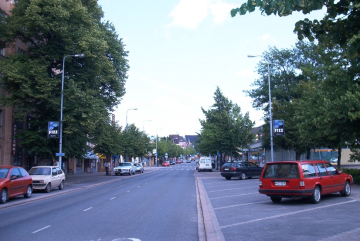
二、自然地理
1.地理条件
The landscape of Lohja is characterized by manors and gardens. Its area is divided by the Lohja ridge, which forms a watershed for the largest lake system in Uusimaa, Lohjanjärvi. The medieval Church of St. Lawrence is the architectural highlight of downtown Lohja, which also includes a heterogeneous mix of buildings mostly dating from the 1960s onwards. The Lohja library, which was opened in 2005, is a distinctly modern building placed in the very center of the city.
2. 交通情况
Lohja is located near Greater Helsinki, and it benefits from a good road network. It takes less than an hour to drive from Helsinki to Lohja on the E18 motorway.
三、经济发展和规模
Lohja has been a focal point for the population and economy of western Uusimaa since the early 14th century. It was renowned as a trading center in the middle ages.
四、产业特点重点项目
As early as 1542, Gustav Vaasa gave Eerik Fleming permission to mine iron ore, and the Ojamo iron mine is said to be the first in Finland. However, limestone, which was excavated in Lohja in addition to the Ojamo open-cast quarry from the Törmä and Solhem open-cast mines, and later from the Tytyri mine, proved to be more important than iron. In addition to Tytyri, Lohja has a Virkkala lime factory, founded in 1897, which was closed during the recession of the 1990s. Lime mining operations were started by Lohjan Kalkkitehdas Oy, led by Petter Forsström, but in 1992 the operations were sold to the current Nordkalk Oyj.
Other significant factories in the building materials industry are Nordic Waterproofing Oy's roofing felt factory in Keskilohja, Rudus' precast concrete factory in Perttilä and Cembrit Oy's factory, founded in 1959 and employing about 200 people, which manufactures building and facade panels in Muijala.
Today, the forest industry is a more important employer in the mining industry in Lohja. Its roots go back to the late 19th century. Commissioner Hjalmar Linder founded the Lohja Cellulose Mill in Pitkäniemi in 1906. In the same year, Linder also built the Lohja Electric Railway from Lohja Railway Station to the Pulp Mill. The line was opened to public transport in 1912, and it became Finland's first electric railway providing public transport. Today, the mill no longer produces cellulose, but specializes in release and other specialty papers. In April 2008, the plant employed about 350 people. Until the summer of 2015, the paper mill called Mondi was permanently closed.
Metsäliitto built the Kirkniemi paper mill in Jönsböle in 1966. The mill was expanded with new paper machines in 1972 and 1996. Today, the mill, owned by Sappi Limited, mainly produces magazine paper and employs 760 people.
Pitkäniemi also houses Metsä Wood's multi-ply wood factory, as well as Mahogany Oy, which manufactures aircraft plywood and thin veneer.
Plastics industry
There are two major Finnish manufacturers of household plastics in Lohja: Oy Plastex Ab, founded in 1936 and moving to Lohja Ventela in 1942, and Oy Orthex Ab, which was always located in Lohja Immula and started operations in 1956. However, due to the high degree of automation, the plastics industry is not a particularly significant employer, for example Orthex employs around 90 people. Plastex manufactures plastic products for both industrial and domestic use. The most well-known consumer products include watering cans, canisters and spray and camping bottles. Orthex's range includes only consumer products and is Finland's largest manufacturer of household plastics. The product range includes almost all household plastics, from kitchen utensils to laundry baskets and from steam wafers to snowshoes.
Metal and electronics industry
In the 1990s, electronics became a major employer in Lohja. At the end of 2006, the factory established in Gunnarla by Elcoteq, which developed from Lohja Oy's Lohja Microelectronics unit in 1995, employed 362 people. Elcoteq closed the plant in August 2007 and relocated production to Estonia and China. Elcoteq moved its headquarters to Luxembourg.
The head office and factory of Saajos Oy, which manufactures fire and security doors for the construction and shipbuilding industries, is located in Keskilohja. Other factories include the Hyrles sheet metal plant, Enics' electronics plant, the boat manufacturer Seliö Boats , Valon Kone, which manufactures woodworking machines, and nLight Oy and Photonium Oy, which utilize nanotechnology.
五、风景名胜,景点( attractions)
1. Liesjärvi National Park
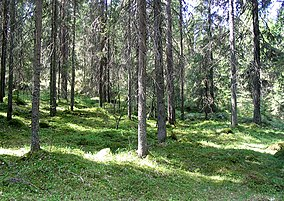
Liesjärvi National Park (Finnish: Liesjärven kansallispuisto) is a national park in the Tavastia Proper region of Finland. Its area is 22 square kilometres (8.5 sq mi). In 1920, part of the present-day national park area was already defined as protected area. The relatively small park area has over 40 kilometres (25 mi) of shoreline. As a whole, the national park is a slice of the near-natural state lake highlands of Häme. It includes the Korteniemi traditional estate, where visitors can try their skills in traditional agricultural work. There are camping places for travel trailers and tents.
2. Rinnekeskus Påminne
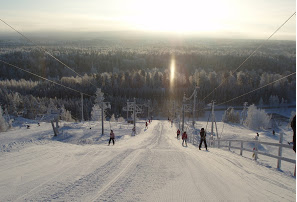
Rinnekeskus Påminne is a Ski resort and skiing place.
3. Karkali Strict Nature Reserve
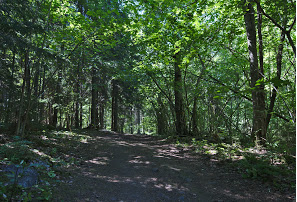
Karkali Strict Nature Reserve (Karkalin luonnonpuisto) is a strict nature reserve located in the Uusimaa region of Finland. This small reserve protects a lush deciduous forest more commonly found in central Europe.
4. Liesjärvi
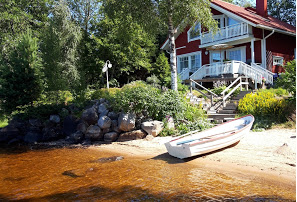
Along the paths trodden by the forester, walk along the magnificent Kyynäränharju that crosses Ahonnokka Lake Liesjärvi and enjoy the Häme landscape at its best. In the summer, live the life of the past on the traditional farm of Korteniemi. Take part in the chores of the farm, admire the sheep or throw yourself into a hay field with a stem in your mouth to watch over the flying clouds.
六、历史文化
1.历史
During the Second World War, the Soviet Union heavily bombed the city, attempting to destroy the Tytyri limestone mine. The oldest settlement finds in Lohja are eight thousand years old. Lohja has later moved people from Häme and Southwest Finland. According to the place name, the area is home to settlements from Southwest Finland, especially Haliko. The lands of Hiit, or Hiidenkylä, have been inhabited in the 400s and 1700s, and the spearheads of the period of international migration have been found in Nummen Hyrsylä, which belonged to the great parish of Lohja. Lohja has two ancient Iron Castle castles, Pöykärin Linnanmäki and Uusipöyl Castle Hill.
From the 13th century, the colonization of the Swedes extended to Lohja as well as to Uusimaa. In the Middle Ages, Lohja was a steward, the oldest written mention of which dates from 1323. In addition to the current area of the city of Lohja, Greater Lohja included Vihti, Karkkila, Nummi-Pusula, Sammatti, Karjalohja and the northern part of Siuntio. Manor houses were established in the area - Kirkniemi, the history of which dates back to 1417, and Laakspohja.
St. Lawrence Church in Lohja, located in the center of Lohja, is the third largest medieval greystone church in Finland. It was built in the late 15th century and is known for its abundant murals.
The first mine in Finland was opened in Ojamo in the middle of the 16th century. Mustion Ruukki was established to refine its ore.Lohja is known for its apples. The apple arrived in Lohja via Siuntio in the 1530s, when the llama of Siuntio Suitia manor, the llama of Southern Finland Erik Fleming, produced apple orchards from his garden in Tallinn. Soon another tree was built in Siuntio's magnificent manor - Sjundby. Sjundby was ruled by Tottit Henrik - and his wife Sigrid Vaasa - the daughter of the King of Sweden. The Tottis also dominated the most significant large farm in Lohja at the time, Kirkniemi Manor, whose immediate surroundings were better suited to apple growing than Sjundby, so apples were also planted in Kirkniemi's calcareous and mulched soil. The example of Kirkniemi manor was first followed by other large manors in Lohja, such as Laakspohja manor, the pastor of Iso-Pappila, wealthy rust hollars and the people of Lohja.
In 1911, Lohjannummi became a densely populated community, officially called Lohjannummi - Lojobacken. In 1926, Lohjankylä and the lonely farms of Pappila, Moisio and Ojamo were separated from the municipality of Lohja as a township of Lohja. At the same time, the word rural municipality was added to the name of the surrounding Lohja municipality. It included those parts that did not become part of the new deal.
In 1953, the Lohja township became a monolingual Finnish-speaking municipality. A paper mill was established in Kirkniemi in the mid-1960s. Kauppala received city rights in 1969. In 1978, the countryside of Lohja changed its name to the municipality of Lohja. A referendum on the municipal association was held in Lohja and the bilingual municipality of Lohja in 1995, and the municipalities merged on 1 January 1997. United Lohja has continued to bilingual on a voluntary basis.
2. 文化
Lohja is famed its culture events. More than a hundred different events are arranged in the city each year by its residents and organizations.The most notable are the Lohja Summer Cultural Festival, the Apple Carnival organized by representatives of business and commerce, the retailers' Hurlumhei Carnival and the Old Time Christmas market continue the tradition of fairs dating back to the Middle Ages. The Doom Metal band Reverend Bizarre hails from Lohja.
The first school in the Finnish-speaking countryside was founded in Lohja in 1659. After the middle of the 19th century, Lohja developed rapidly. The parish had two agglomerations, the industrial association Virkkala and the service center Lohjannummi, which was created around the church. The first store in Lohjannummi was founded in 1861, a pharmacy in 1862 and a post office in 1865. In 1865, the first steam sawmill was started in Virkkala, the same year that the loan library became the keeper. Lohja received municipal administration in 1867. The Savings Bank was opened in 1870. From 1897 limestone was processed in Lohja, in 1906 Mustio's ironworks cartridge Hjalmar Linder built a pulp mill and in 1907 a glass factory was opened in Lohja. The first Finnish-language school in the countryside of Western Uusimaa began operating in 1914.
七、其他信息
There are three amateur theaters in the city, of which the Lohja Theater has professional management. The theater was founded in 1967, but has been in operation for over a hundred years. The theater collaborates with the Lohja City Orchestra and the Lohja Museum, among others.
The Lohja City Orchestra was founded in 1964. The orchestra has visited the Savonlinna Opera Festival and acted as the orchestra of José Carreras and Plácido Domingo when they visited Finland. Esa Heikkilä has been the artistic director and conductor of the Lohja City Orchestra since 2010.
The region's local newspaper Länsi-Uusimaa is published in Lohja. Ykkössanomat appeared in Lohja Saukkola, but Salon Seudun Sanomat closed it in 2015. In addition, Karkkilan Tienoo occasionally publishes articles that touch Lohja in the direction of the former Nummi-Pusula. The free distribution magazines Länsi-Uusimaa Ilta (formerly Iltohja) and Ykkös-Lohja also appear in Lohja.
八、联系方式

Mayor of Lohja: Mika Sivula
Address: Karstuntie 4, PL 71, 08101 Lohja
Phone number: 019 3690 /044 369 4300
Website:www.kaupunki.lohja.fi
Email: kirjaamo@lohja.fi
